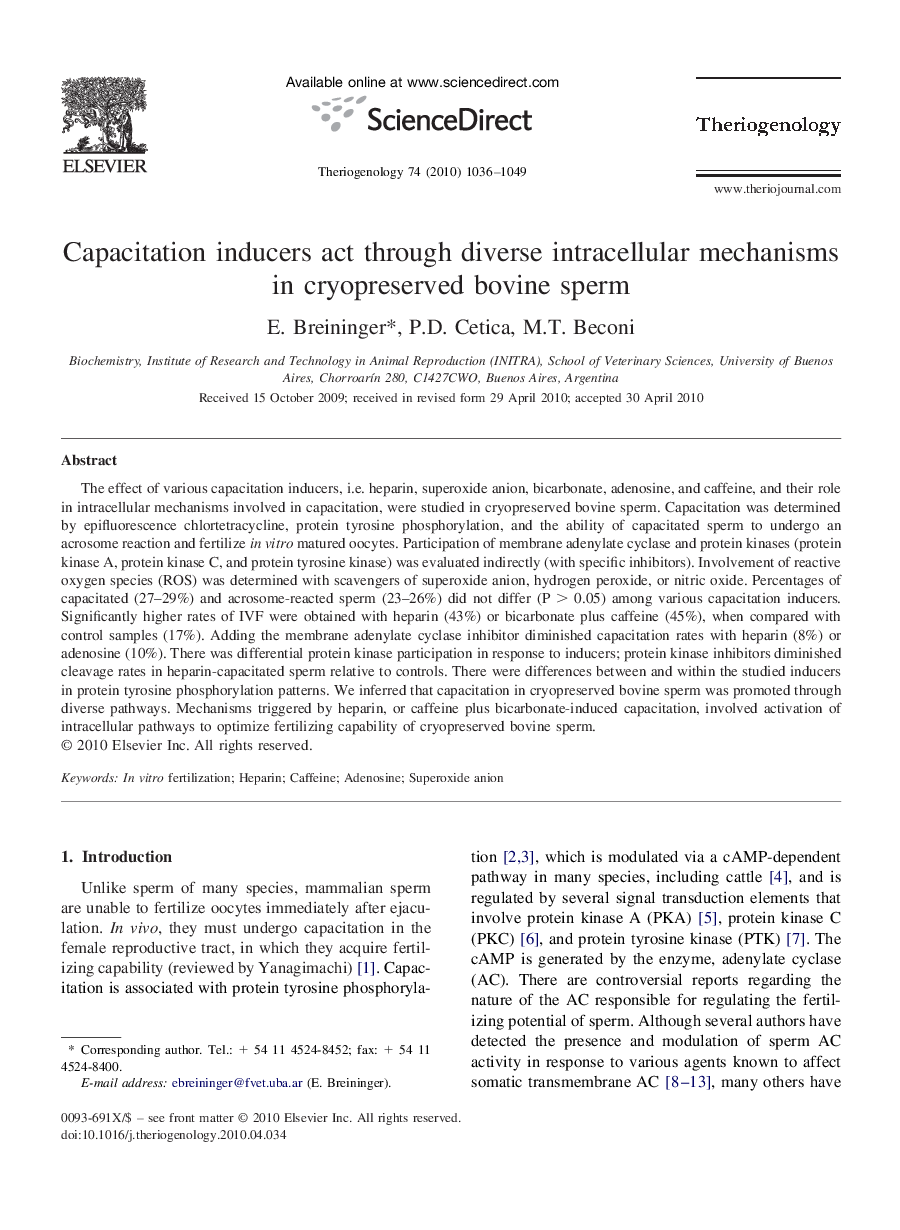| Article ID | Journal | Published Year | Pages | File Type |
|---|---|---|---|---|
| 2096427 | Theriogenology | 2010 | 14 Pages |
The effect of various capacitation inducers, i.e. heparin, superoxide anion, bicarbonate, adenosine, and caffeine, and their role in intracellular mechanisms involved in capacitation, were studied in cryopreserved bovine sperm. Capacitation was determined by epifluorescence chlortetracycline, protein tyrosine phosphorylation, and the ability of capacitated sperm to undergo an acrosome reaction and fertilize in vitro matured oocytes. Participation of membrane adenylate cyclase and protein kinases (protein kinase A, protein kinase C, and protein tyrosine kinase) was evaluated indirectly (with specific inhibitors). Involvement of reactive oxygen species (ROS) was determined with scavengers of superoxide anion, hydrogen peroxide, or nitric oxide. Percentages of capacitated (27–29%) and acrosome-reacted sperm (23–26%) did not differ (P > 0.05) among various capacitation inducers. Significantly higher rates of IVF were obtained with heparin (43%) or bicarbonate plus caffeine (45%), when compared with control samples (17%). Adding the membrane adenylate cyclase inhibitor diminished capacitation rates with heparin (8%) or adenosine (10%). There was differential protein kinase participation in response to inducers; protein kinase inhibitors diminished cleavage rates in heparin-capacitated sperm relative to controls. There were differences between and within the studied inducers in protein tyrosine phosphorylation patterns. We inferred that capacitation in cryopreserved bovine sperm was promoted through diverse pathways. Mechanisms triggered by heparin, or caffeine plus bicarbonate-induced capacitation, involved activation of intracellular pathways to optimize fertilizing capability of cryopreserved bovine sperm.
